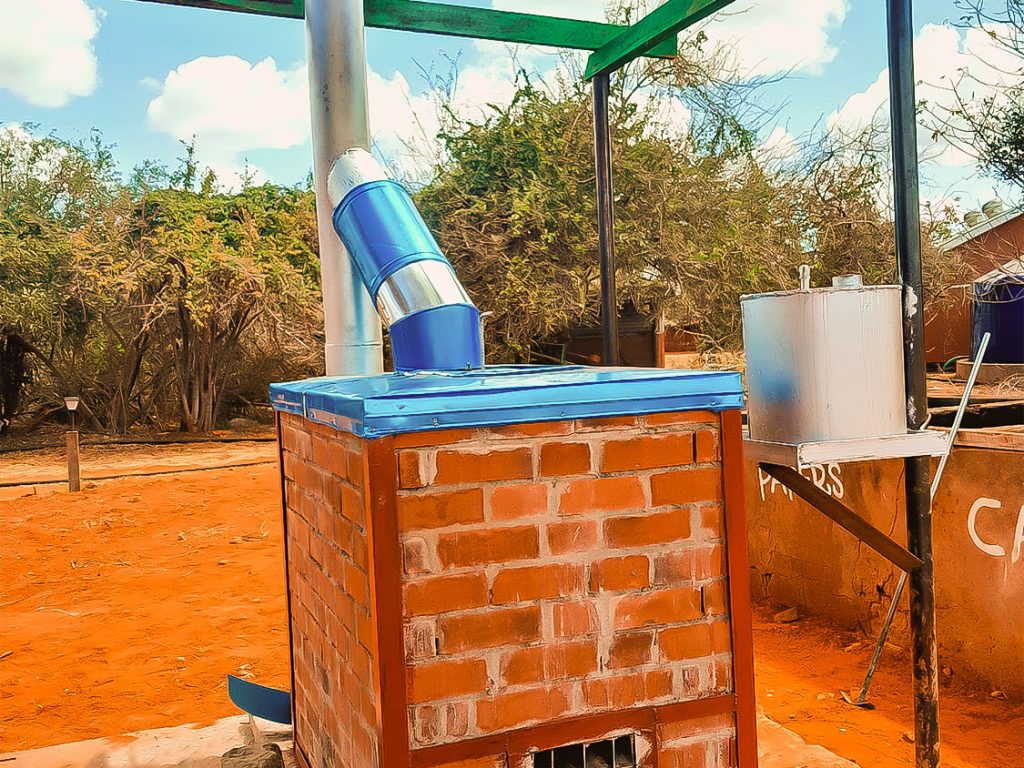LOW-COST INCINERATORS IN KENYA
We are the leading suppliers of incinerators in Kenya and East African region.
Our Medical and hazardous waste incinerator is an equipment well suited for burning syringe, paper waste, bandages, absorbent cotton and other Medical wastes . It has high burning efficiency, high degree of environmental safety. it is an ideal choice for waste treatment of Hospital, Hotels and other Industries.
We mainly build our incinerators on site, which makes their costs fair to most clients incuding the communities that come from low income regions.
Our Brick incinerators, are incineration systems built using bricks and other locally available materials. They offer a practical and accessible method for waste disposal in communities with limited resources and infrastructure in Kenya. These incinerators provide controlled combustion of waste, reducing its volume and minimizing the release of pollutants into the environment.

Design of a Brick Incinerator
Brick incinerators follow a basic combustion process to efficiently burn waste materials. The key elements of their design include:
- Primary Combustion Chamber: The combustion chamber is the primary component where waste is burned. It is constructed using heat-resistant bricks (Refractory Bricks and cement) and is designed to withstand high temperatures around 800oC.
- Secondary Combustion Zone: Our incinerators include a secondary combustion zone or afterburner. This zone helps further break down any remaining pollutants and gases, resulting in cleaner emissions.
- Insulation: Insulating materials, such as refractory bricks or ceramic fibers, are used to line the combustion chamber. This helps retain heat within the chamber, ensuring optimal combustion efficiency.
- Chimney: A chimney is an essential feature of brick incinerators. It allows for the safe release of combustion gases and helps maintain a draft, ensuring proper airflow throughout the system.
Benefits of Brick Incinerators In Kenya
- Cost-Effectiveness: Brick incinerators are relatively inexpensive to construct and maintain compared to more advanced waste incineration technologies. The use of locally available materials, such as bricks and metal sheets, keeps the costs low and makes them accessible to communities with limited financial resources.
- Waste Volume Reduction: One of the significant advantages of brick incinerators is their ability to reduce waste volume. The high temperatures achieved during combustion break down organic matter and reduce the bulk of waste, resulting in a smaller amount of residual ash that is easier to handle and dispose of.
- Environmental Control: Brick incinerators provide controlled combustion, minimizing the release of pollutants into the environment. The combustion chamber and chimney facilitate proper airflow, ensuring efficient burning and reducing the emission of harmful gases and particulate matter.
- Pathogen and Pest Elimination: Waste incineration in brick incinerators helps eliminate pathogens, bacteria, and pests present in the waste. The high temperatures reached during combustion destroy harmful microorganisms, making the remaining ash safer for disposal or reuse.
Considerations and Best Practices for Building an Incinerator in Kenya
- Design and Construction: It is essential to ensure proper design and construction of brick incinerators. Engaging professionals or organizations experienced in waste management and incineration systems can help ensure safety, efficiency, and compliance with local regulations.
- Waste Segregation: To maximize the efficiency of brick incinerators, waste segregation at the source is crucial. Communities should implement waste management strategies that promote responsible separation of recyclables, hazardous materials, and non-combustible waste.
- Emissions and Air Quality: While brick incinerators offer advantages in terms of controlled combustion, it is essential to monitor and assess their emissions to ensure compliance with air quality standards. Regular maintenance and monitoring can help identify and address any issues that may arise.
- Community Engagement and Education: Engaging the local community and raising awareness about the benefits and proper use of brick incinerators is vital. Promoting responsible waste management practices, including waste reduction, recycling, and composting, can complement the use of incinerators as part of a comprehensive waste management system.
